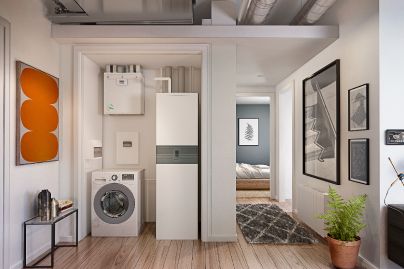Buying guide
Air Purifier
Five things to consider
Enjoying clean, pure air in your home is easy with an air purifier, but there’s a lot to think about when it comes to choosing which model is right for you. This handy guide will help you decide what features are most important to you, from filter technology to additional functionality.
Why do you need an Air Purifier?
Deciding why you need an air purifier will help narrow down the type of technologies that you will need. If someone in your home has allergies, then choose a purifier that features a HEPA filter, or if you’re looking for an easy way to neutralise cooking smells in your kitchen, a purifier with carbon filtration is ideal. For all-around use then look for a model that features a combination of filtration stages – the more stages of filtration, the cleaner the air will be.
What do Air Purifiers do?
Reduce pollen, allergens and odours
Reduce dust and pet dander
Circulates cleaner, fresher air
What Filter would work best?
Once you’ve decided where you are going to be using your air purifier, it’s important to consider the filter best suited for your room.You should also consider the ease of buying and installing replacement filters. We have ensured this process is as easy as possible, with replacement filters sold online and instructions on replacing the filter included in the product manual.
Activated carbon filters neutralises any odours and traps potentially harmful gasses and chemicals such as cigarette smoke. While HEPA filters are able to retain up to 99.97% of polluting particles such as pollen, bacteria, pet dander and spores, making them ideal for allergy sufferers. Ionisers work great with this technology as they cause the particles to clump up, being more easily captured by the HEPA filter, so for more efficient operation look for a product that has both.
What size do you need?
Different purifiers can be used for different sized rooms, so make sure that you pick a model that will best suit the room dimensions it will be used in. It is also worth considering whether you want your purifier to be standing on the floor or ‘table-top’ style, depending on where in the room you decide to use it. The weight and physical dimensions should also be thought about if you intend on moving the purifier around the home as needed.
What Features do you need?
Some air purifiers like the DXAPV3N Purifier feature Viro3 technology which produce negative ions that help combat positive ions that are prevalent in airborne viruses. It is also worth considering a purifier with differing day/night speed settings. Dimplex air purifiers offer this feature where the night setting allows for the air purifier to run at a very low fan speed to enable you to get a good nights sleep with minimal noise intrusion.

How does combining HVAC technologies maximise development ROI and help improve the energy efficiency of developments?
Innovative low carbon hybrid electric technologies are increasingly coming into focus for modern developments where electrifying HVAC technologies can help maximise the ROI and improve energy efficiency. Changing legislation focuses on increasing energy efficiency standards for new domestic dwellings. The move away from natural gas is expected to become necessary for new residential buildings by 2025 and could be beneficial for their compliance from 2022.

How does the Zeroth Energy System address domestic hot water demand and reduce primary energy use in apartments?
Domestic hot water (DHW) is typically the dominant energy load in modern, well insulated buildings. Ambient loops, such as the Zeroth Energy System can significantly reduce the annual CO2 emissions and primary energy use of large residential properties in two ways:
Balancing the DHW demand and output
Heating water to the required temperature at the point of use
We will consider how the technology achieves these reductions and what the impact is on modern developments.

Spring clean your way to a healthy home
Whether you mark the changes of season by the meteorological calendar or the astrological calendar, spring has officially sprung. Though it may not seem like it we’re now in the season of daffodils, blossoming trees and longer days, which puts many of us in the mood for spring cleaning. Here we take a look at some of the ways you can ensure a clean, healthy home for you and your family as the year moves forward.











